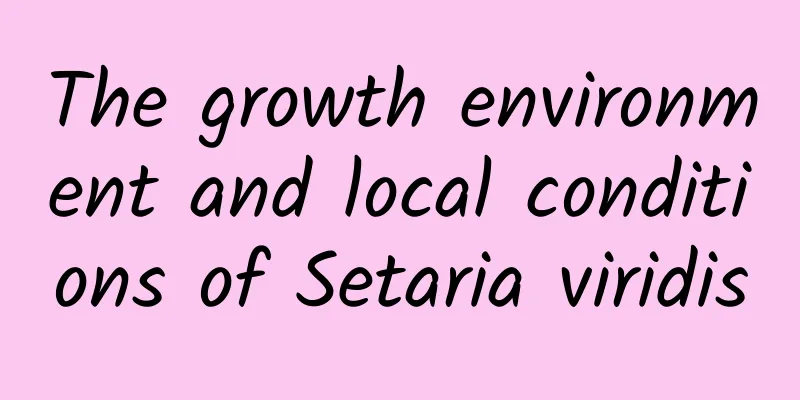Why does ginseng fruit only bloom but not bear fruit?

|
Ginseng fruit is a fruit that many people like to eat. Its flesh is golden, refreshing and juicy, and has a unique flavor, making it very popular. Many people grow it, but why does the ginseng fruit they grow only bloom but don’t bear fruit? Let’s learn more about it below. 1. Insufficient light Ginseng fruit trees like sunlight. If the ambient light is weak, it will be difficult for the ginseng fruit to bloom and bear fruit. The solution is to make sure the plant receives enough sunlight every day. 2. Pollination issues The flowering period of ginseng fruit is usually in spring, when the weather is cold and windy, which may prevent the flowers from receiving adequate pollination. In addition, if fruit trees are planted in a closed environment, the flowers may not be fully pollinated, resulting in no fruit bearing. In this case, artificial pollination can be adopted, or pollinating insects such as bees can be attracted. 3. Under the age of It takes time for the ginseng fruit plant to mature and begin to produce fruit, and if your plant is still young, it may not be ready yet. The solution is to wait patiently. Usually, ginseng fruit plants start to bear fruit in the second year after planting. 4. Lack of nutrients If the ginseng fruit plant lacks necessary nutrients, it may also cause it to bloom but not bear fruit. The solution is to apply proper fertilizers, especially fertilizers rich in phosphorus and potassium, which can help plants bear fruit. 5. Unsuitable temperature Ginseng fruit requires suitable temperature to grow. Too high or too low temperature may result in flowering without fruiting. The solution is to maintain a suitable temperature. Generally speaking, the daytime temperature should be between 25-30℃ and the nighttime temperature should be between 15-20℃. 6. Improper pruning People believe that as long as flowers bloom, fruits will be produced. Therefore, when pruning, the nutrients grow too vigorously, a large number of flowers have already bloomed, and the nutrients are consumed too much. The flowers formed are of poor quality and no longer have the conditions to bear fruit. When selecting branches, the branches that have not bloomed are removed, leaving the branches that have bloomed but have not yet borne fruit. The side branches begin to grow in large numbers again. If the side branches are not removed in time, when pruning again, the branches that have bloomed are still selected and the branches that have not bloomed are removed. This cycle results in the phenomenon that pruning will not bear fruit. Therefore, when removing side branches, the branches selected should be those that have just formed flower spikes but have not yet bloomed. 7. Poor soil quality Ginseng fruit prefers loam containing organic matter. If the soil quality is poor and the nutrition is insufficient, it will naturally be difficult for it to bloom and bear fruit. At this time, fertilizer can be added to improve the nutrients in the soil. 8. Lack of water Drought will affect the growth and development of ginseng fruit, making it unable to bloom and bear fruit normally. Proper watering can promote flowering and fruiting. That’s it |
<<: How to repot potted irises and how often should you repot them?
>>: Is potted iris easy to grow? How to care for it?
Recommend
Don’t throw the leftover “bones” into the trash can. Bury them in the soil and the flowers will flourish.
You may not understand other things I say, but I’...
What is Akadama soil? What are the advantages and disadvantages of Akadama soil?
What is Akadama Akadama soil is formed by the acc...
What to do if the leaves of Clivia are not neat
1. Adjust the position regularly There are usuall...
How to water rosemary
Rosemary watering tips Rosemary is a shrub of the...
Plants suitable for indoors, plants suitable for home
1. Indoor plants 1. Monstera: The shape of its le...
Is cherry planting profitable? What is the cost and profit per acre?
Is growing cherries profitable? The market price ...
The difference between cinnabar root and dwarf tea
1. Difference of blades The leaves of the cinnaba...
Cicada breeding and reproduction techniques
Cicada is also called cicada, cicada monkey, etc....
Cultivation methods and precautions of large-leaf jasmine
1. Breeding methods 1. Soil: Acidic soil or neutr...
Differences between hibiscus and hibiscus
high: Hibiscus can grow up to 4 meters in height....
Difference Between Verbena and Rosemary
1. Difference of blades The leaves of verbena are...
How to pinch the four-season plum
1. The importance of pinching This step is usuall...
Do cacti need watering?
1. Is it necessary to pour Many people believe th...
Is it good to have moss in the flower pot?
The benefits of having moss in flower pots In fac...
Rose tea
Value Function Main effects: Chinese medicine bel...









